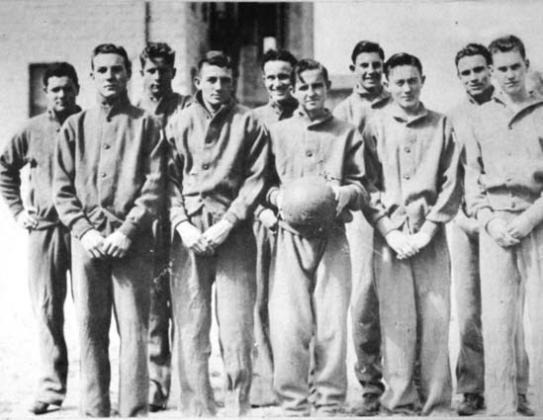Noel Shoup is an American hero who lost his life when his B-17 was shot down in Northern France in 1944. He had graduated from Dublin High School and went on to follow his dream of flying the big bombers that were built for the war in Europe. It has been nearly 80 years since his plane was shot down, but the military has identified and will be returning his remains in September. In 1942, there weresomanywhounderstood the importance of freedom in America. He certainly must have. In reading about pilots who were part of the war, they say the bravest were those who never returned. They were the ones who took the assignments knowing full well they would probably never come back. In the book “Masters of the Air” it talks about how despite their fear, despite their concerns, those men got on their bombers and went anyway.
Noel Shoup’s father was an educator and taught in Bluff Dale and also at Chalk Mountain. Later he worked for the Soil Conservation District and the family moved to Greens Creek. Noel attended Dublin High School his senior year. While there, he played on the basketball team. The team did well, winning a tournament over Stephenville 4 to 3. He also excelled in FFA. Surprisingly, the FFA had 100 projects and was one of the most active in Texas. Noel graduated in 1936 and is pictured in the yearbook. (Shamrock, DHS Yearbook, 1936) During his senior year in college, the Japanese attacked Pearl Harbor and the national opinion of how we should approach the war changed. He was working at Galbraith Steel and attending Texas Tech where he was majoring in Government. There was a sense in the United States that the problems created by the Nazis must be made right. He like many others decided to volunteer for the armed services just months before graduation.
He joined the Army Air Corp on March 21, 1942 and signed up to be a pilot. The cutting edge of flight technology was in aircraft being designed for the war effort. He must have wanted to be a part of it. He first was sent to Blackland Field near Waco, then trained at Perrin Field near Denison, Texas. Noel attended the Grayson Basic Flying School. He trained in a high powered BT-13 aircraft. It had two seats in it. The front seat was for the student and the instructor was in back. There he learned flying by instruments, night flying and using the radio. He also learned important details about weather and flight controls that would enable him to fly both the B-24s and B-17s. (Wikipedia, Perrin Field) (Dublin Progress November 20, 1942) He earned his wings on Feb. 16, 1943 at Blackland Field near Waco. (Dublin Progress, March 24, 1944) From there he trained at Kelly Field near San Antonio and at Geiger Field near Spokane. Spokane was near Seattle where many of the B-17s were being manufactured. Planes were shuttled from Boeing Field to Geiger Field for Pilot training. That training was important to learn about the engines and how all the flight surfaces worked that allowed the plane to maneuver.
The newspaper reported, “Lt. Noel E. Shoup has been changed from a B-24 to a B-17 and has been sent from California to [Rapid City Army Air Base] South Dakota for his second phase of training as co-pilot on the B-17. For the third phase of training he is to take over the crew and become first pilot.” (Dublin Progress May 7, 1943) Some years before, a reporter from the Seattle newspaper wrote about the new Boeing bomber when it was first built. With the number of guns that bristled from the fuselage, the reporter called it a flying fortress. The name stuck, so from then on, the name Flying Fortress was used for the Boeing B-17.
Noel probably couldn’t have picked a better aircraft to fly. It was stable, it was fast and could fly at high altitudes. One of the compromises was that it had so many guns on board that it could only carry 8000 pounds of bombs. The Boeing B-17 had a reputation of being able to fly in spite of significant damage. Many B-17s came back to base despite being shot up and having pieces missing.
His flight engineer probably trained at the Boeing Air School. It took two years for the flight engineer to get ready for service. Noel’s crew was assembled and they worked so well together their group stayed for most of the flights. The Progress later reported, Noel Shoup is “completing training at Geiger Field, and will be an expert pilot of a Flying Fortress.”(Dublin Progress, Oct. 1, 1943) From there, Noel and his crew were sent to Royal Air Force Molesworth in England to be part of the 303rd Bombardment Group. The 303rd was one of the first VIII Bomber Command B-17 Flying Fortress units there.
The Nov. 19, 1943 Dublin Progress reported, “Noel Shoup is first pilot of a Flying Fortress somewhere overseas.” In fact, Noel had arrived at RAF Molesworth on November, 12, 1943 and had already started working with the Flying Fortress units there.
Visit the Historical Museum at dublinhistorical.org


